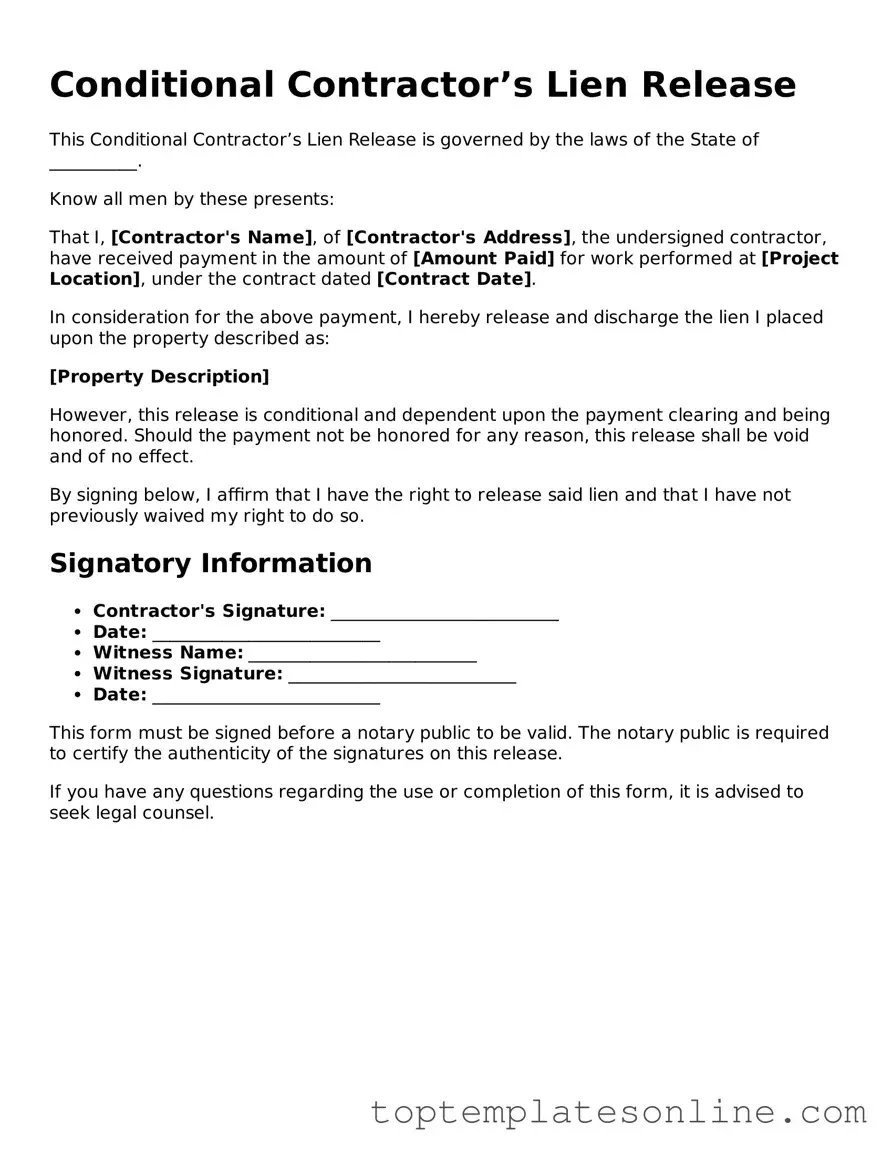Attorney-Approved Conditional Contractor’s Lien Release Form
The Conditional Contractor’s Lien Release form is a legal document used in construction projects to release a contractor's lien on a property, contingent upon certain conditions being met. This form protects property owners by ensuring that they only pay for work completed or materials supplied. Understanding how and when to use this form can help prevent disputes and safeguard financial interests in construction agreements.
Customize Conditional Contractor’s Lien Release Here
